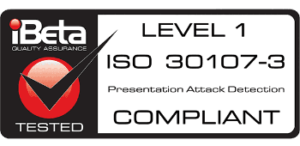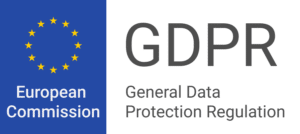What is QR control?
QR control refers to the use of QR codes to manage and regulate access to various resources. It involves using QR codes as digital credentials to:
- Authenticate users: QR codes serve as digital keys, quickly scanned to verify user identities and permissions with ease and precision.
- Monitor access: Every access event is tracked and recorded, providing valuable insights and ensuring robust security through detailed logs.
- Manage permissions: QR codes can be effortlessly updated or revoked, allowing for dynamic adjustment of user access rights as needs change.
When combined with biometric technology, QR control becomes even more powerful. Biometric QR codes add an extra layer of security, ensuring that only authorized users can gain access.
This integration makes access management not only streamlined and adaptable but also significantly more secure, enhancing both the security and user experience.

What are QR code access control systems?
QR code access control systems are security solutions that use QR codes to manage access to physical spaces or digital resources.
These QR codes serve as access credentials, containing information to authorize or restrict entry. Although QR codes are convenient, they can be shared, which poses a security risk.
To enhance security, advanced biometric QR codes have been developed. These codes integrate traditional QR codes with biometric data, such as facial recognition, providing a higher level of security.
Additionally, this system employs two-factor authentication: “something you are” (your biometrics) and “something you have” (the QR code), significantly increasing the security of the facilities and reducing the risk of unauthorized access.

How do QR codes work with access control systems?
As mentioned earlier, QR codes are used in access control systems to manage entry to physical or digital spaces. Here is a general overview of how they work:
- Generation: An access credential, in the form of a QR code, is generated for each user. This code contains encrypted data that identifies the user and their access permissions.
- Distribution: The QR code is distributed to the user via email, SMS, a mobile app, or any other method.
- Scanning: At the access point, users present their QR code to a scanner or mobile device equipped with a QR code reader.
- Verification: The system verifies the QR code against a database to confirm the user’s identity and access rights.
- Access: If the QR code is valid, the system grants access and logs the event for security purposes.

QR code door entry system with Veridas
To enhance security and prevent misuse or unauthorized sharing of QR codes, Veridas has developed (and patented) a biometric QR code called ZeroData ID.
This credential, designed specifically for secure door access, appears similar to a traditional QR code but includes the user’s facial biometrics. Here’s how it works:
- Generation: From a selfie or image of the user, Veridas transforms this information into a private, irreversible, non-interoperable, and revocable vector. This vector is then encrypted with additional user information and access permissions. This process is completed in just a few seconds.
- Distribution: The QR code is distributed to the user via email or can be downloaded to their wallet. It can be used from their mobile device or printed out for physical door access.
- Scanning: At the door entry point, users present their QR code to a facial recognition terminal that scans both the QR code and the user’s face to match them.
- Verification: The system verifies that the QR code is valid and that the user has door access rights, and then checks the biometric data to confirm that the user is the legitimate owner of the QR code.
- Access: If the QR code is valid and belongs to the user, the system grants door access and logs the event for security purposes.
QR code access control reader
A QR code access control reader is a specialized device designed to enable entry by reading and processing QR codes. Its operation involves four main steps:
First, the reader captures the QR code presented by the user. Then, it decodes the embedded information. This decoded data is sent to the access control system, where the user’s credentials are verified. If verification is successful, the system grants access.
At Veridas, we have developed the ZeroData Terminal, a dual-factor authentication device that combines biometric QR code scanning with facial recognition.
Designed for both indoor and outdoor environments, the ZeroData Terminal seamlessly integrates with leading access control systems, providing a secure and efficient solution for entry management.

How do I create a QR code in access?
Creating a QR code for access involves generating a code that includes essential information such as user credentials, biometrics, permissions, or contextual data.
To ensure security, use a QR code generator to encode this data and then integrate it with your access control system.
After generating the QR code, distribute it to authorized users through secure channels and verify its compatibility and functionality with your access system.
In our case, we utilize our biometric engine to create biometric QR codes. This engine, trained with neural networks, produces an encrypted, private, irreversible, and secure credential that is also revocable.
This advanced approach ensures a high level of security and reliability in managing access.

What are the advantages of our QR code access control?
Our QR codes access control system offers several key benefits:
- Convenient: They streamline the access process, allowing users to quickly gain entry by scanning a QR code from their mobile devices or printed codes.
- Scalable: QR codes can be easily generated, updated, or revoked, enabling flexible scaling of access control and efficient management of permissions.
- Flexible Integration: They integrate seamlessly with existing access control systems, providing a versatile solution for various security configurations.
- Real-Time Monitoring: Access events are logged in real time, providing valuable data for security audits and monitoring.
When it comes to our biometric QR code (ZeroData ID), additional benefits include:
- Zero Data Storage: Veridas doesn’t retain any information during credential generation or verification, minimizing the risk of breaches. All necessary data for identity verification is contained within the credential, enhancing security and compliance.
- Self-Sovereign Identity: Users maintain absolute control over their biometric data, as Veridas does not store any of it. This approach not only improves privacy but also ensures compliance with data protection regulations, thereby fostering trust in the authentication process.
- Enhanced Security: With advanced features like encryption and biometric integration, QR codes can offer robust security, reducing the risk of unauthorized access and credential sharing.





















